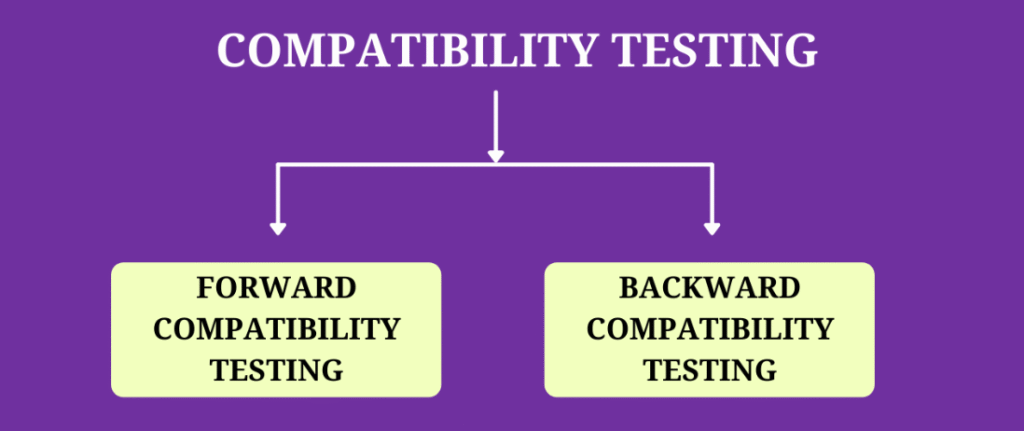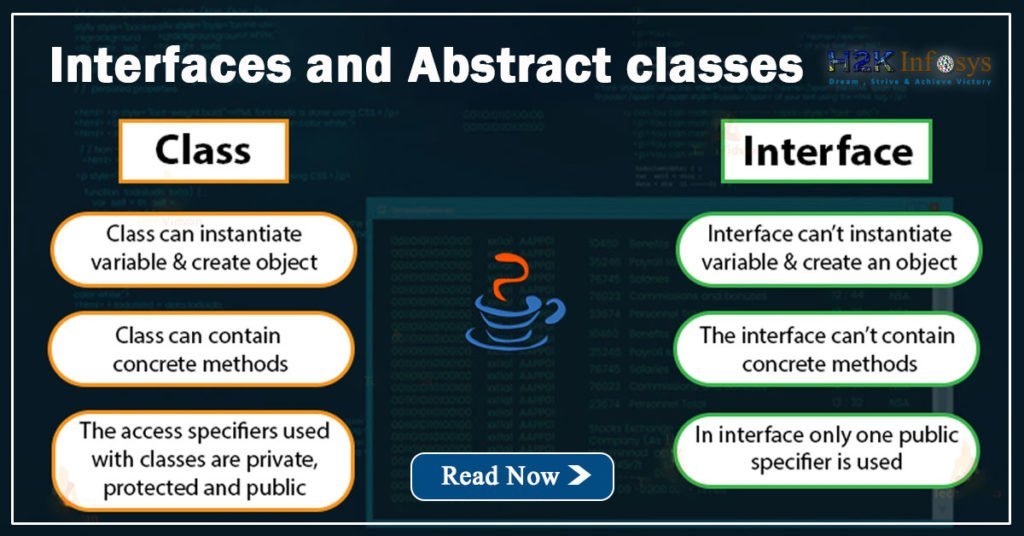Introduction
In the fast-moving world of software development, new versions, updates, and patches are released constantly. Yet, one of the most critical challenges is ensuring that newer versions of software continue to work flawlessly with older systems, configurations, and data. This is where Backward Compatibility Testing becomes indispensable.
For anyone pursuing QA software testing courses understanding backward compatibility testing is essential. It is not just a technical check; it’s a business necessity that ensures user satisfaction, product reliability, and long-term brand trust.

What Is Backward Compatibility Testing?
Backward Compatibility Testing, also known as backward-compatible testing, is a type of non-functional testing used to verify that a new version of software, hardware, or application remains compatible with its previous versions.
In simple terms, it answers the question: “Will my older data, files, configurations, and integrations still work after the upgrade?”
For instance, if you upgrade from Android 13 to Android 14, all your older apps should still run properly. That’s backward compatibility in action.
Backward compatibility testing ensures users don’t experience broken functionality, missing data, or integration failures after a version upgrade.
Why Backward Compatibility Testing Is Important
1. Customer Retention
Customers expect seamless transitions when upgrading software. If the new version breaks older functionality, it can result in frustration and loss of users.
2. Brand Reputation
A stable upgrade path boosts a company’s reputation for reliability. Companies like Microsoft, Apple, and Oracle invest heavily in backward compatibility testing to maintain user confidence.
3. Reduced Support Costs
If users encounter fewer compatibility issues, customer support costs decrease significantly. QA teams can proactively identify issues before release.
4. Long-Term Maintenance
Backward compatibility allows organizations to support legacy systems and older integrations without rewriting everything from scratch.
5. Business Continuity
For enterprises with critical operations running on older systems, ensuring backward compatibility is key to avoiding costly downtimes.

Where Backward Compatibility Testing Is Used
Backward compatibility testing is vital in several domains, including:
- Operating Systems: Verifying old applications run on newer OS versions (e.g., Windows 10 apps on Windows 11).
- Databases: Ensuring older database schemas remain valid after upgrades.
- Browsers: Checking that websites work on newer browser versions.
- Mobile Apps: Verifying older app data and settings persist after updates.
- Enterprise Software: Ensuring ERP, CRM, or financial applications work after upgrading modules.
- APIs and Web Services: Confirming that clients using older API versions still receive correct responses after server upgrades.
Key Features of Backward Compatibility Testing
- Version Control Awareness – QA testers must maintain detailed records of changes in code, schema, and APIs.
- Legacy Data Validation – Ensure that older data formats are readable and functional in the new version.
- Cross-Environment Testing – Validate functionality across different environments, including staging, UAT, and production.
- Automation Integration – Automated test scripts can simulate older versions to validate compatibility efficiently.
- Comprehensive Test Coverage – Covers both functional and non-functional aspects like performance and security.
These aspects are usually covered in modern QA software testing courses to help aspiring testers manage version control and compatibility testing scenarios effectively.
How Backward Compatibility Testing Works
The process involves comparing the new version against one or more previous versions of the product. Let’s look at the step-by-step process:
Step 1: Identify Compatibility Scope
Determine what needs to remain compatible: data formats, APIs, UI elements, or hardware interfaces. The scope helps define testing boundaries.
Step 2: Analyze the Changes
The QA team reviews all modifications made in the new version, such as:
- Updated APIs
- Modified data structures
- Deprecated features
- Library upgrades
This helps identify potential breakpoints.
Step 3: Prepare the Test Environment
Create a testing environment that mimics both the older and newer versions of the system. This setup should include:
- Old configuration files
- Previous database schema
- Historical data sets
- Legacy integrations
Step 4: Execute Test Cases
Run a combination of manual and automated test cases that validate the following:
- The new version reads older files correctly.
- Legacy APIs return expected outputs.
- Older UI settings load without errors.
- Databases maintain referential integrity.
Step 5: Compare and Analyze Results
Compare test outcomes from older and newer versions. Identify differences or failures that might break backward compatibility.
Step 6: Document and Report Issues
Document compatibility issues, their impact, and proposed fixes. Reporting tools like JIRA, TestRail, or Zephyr are widely used.
Step 7: Regression Testing
Once compatibility issues are fixed, regression testing ensures that other functionalities remain intact.
Real-World Example
Consider a banking application that regularly updates its software.
- The previous version (v1.0) allowed customers to download statements in PDF.
- The new version (v2.0) introduces JSON and CSV formats.
Backward compatibility testing ensures that the new version still supports PDF downloads for users accustomed to that format.
Without such testing, customers using older workflows might face compatibility errors or loss of critical data exports.
Tools Used in Backward Compatibility Testing
Modern QA environments rely on a mix of automation and regression tools for efficient backward compatibility checks. Commonly used tools include:
- Selenium: For automated web app compatibility testing.
- Postman: For API version compatibility checks.
- Jenkins: To automate testing pipelines across different versions.
- Docker: For creating isolated backward testing environments.
- Git: For managing version control and tracking changes.
- Appium: For mobile backward compatibility validation.
In Quality assurance testing courses, these tools are introduced as part of automation frameworks to help students simulate real-time compatibility issues.
Challenges in Backward Compatibility Testing
Despite its importance, backward compatibility testing presents unique challenges:
1. Version Explosion
Managing multiple previous versions can be complex. Large enterprises may have to test compatibility across five or more previous releases.
2. Time and Cost
Backward testing often requires maintaining legacy environments, which increases costs and setup time.
3. Data Mismatch
Older databases may not align with the new schema, causing migration issues.
4. API Deprecation
APIs often evolve; maintaining support for older versions without security risks is difficult.
5. Tool Limitations
Some automation tools struggle to simulate older frameworks or libraries.
To overcome these challenges, QA engineers need advanced technical training, which QA software testing courses provide through hands-on labs and real-time projects.
Backward Compatibility vs Forward Compatibility
| Aspect | Backward Compatibility | Forward Compatibility |
|---|---|---|
| Definition | Ensures new versions work with older versions | Ensures older versions can handle data from newer versions |
| Focus | Legacy system continuity | Future scalability |
| Use Case | Supporting old user data in new software | Preparing old software to handle new file formats |
| Testing Complexity | Moderate to high | High (requires predictive analysis) |
| Example | Windows 11 running apps from Windows 10 | Windows 10 reading a file created on Windows 11 |
Both types of compatibility testing ensure product stability, but backward compatibility testing is especially critical during continuous deployment cycles.
Best Practices for Effective Backward Compatibility Testing
1. Maintain Detailed Version Logs
Always track every change, including schema modifications, API versioning, feature deprecations, and UI updates.
2. Create Reusable Test Suites
Automate tests that can be reused across multiple versions to save time and reduce human error.
3. Implement Continuous Integration (CI)
Use CI tools like Jenkins, GitLab CI, or Azure DevOps to run compatibility checks automatically during builds.
4. Use Mock Data
Simulate older data scenarios using realistic mock datasets to uncover hidden issues.
5. Prioritize Critical Features
Focus on core business workflows and user data first, ensuring backward compatibility in areas that matter most.
6. Document Everything
Comprehensive test documentation allows future teams to understand compatibility expectations for upcoming releases.
7. Integrate Automation
Automation tools not only speed up the process but also help detect subtle regressions early.
These practices are integral parts of modern Quality assurance testing courses, where students learn how to plan, execute, and optimize backward compatibility test cases efficiently.
Backward Compatibility Testing in Agile and DevOps Environments
In Agile and DevOps workflows, where software updates are frequent, backward compatibility testing plays a crucial role in CI/CD pipelines.
- In Agile: Each sprint must validate that new stories or epics don’t break existing user workflows.
- In DevOps: Continuous testing ensures backward compatibility with each deployment.
Tools like Docker, Kubernetes, and Azure DevOps pipelines help teams automate these compatibility checks as part of integration workflows.
Professionals enrolling in QA software testing courses learn how to integrate such checks in Jenkins pipelines or cloud-based CI systems, ensuring rapid feedback and stable releases.
Metrics for Measuring Backward Compatibility Success
Testing is only valuable when measurable. QA teams track the following key metrics:
- Pass/Fail Rate: Percentage of test cases that pass in older vs newer versions.
- Defect Density: Number of backward compatibility issues per release.
- Regression Impact Score: How new changes affect older functionalities.
- Mean Time to Resolution (MTTR): How quickly issues are fixed.
- User Feedback Ratings: Post-release satisfaction metrics tied to upgrade stability.
Tracking these KPIs allows organizations to quantify compatibility quality across releases.
Case Study: Backward Compatibility in Microsoft Office
Microsoft’s success with backward compatibility is legendary. Word documents from decades ago still open in the latest Office suite.
This is achieved through:
- Version tagging in file headers
- Backward parsers that interpret old XML structures
- Legacy module preservation
Such engineering foresight highlights how backward compatibility safeguards customer trust, a core concept emphasized in Quality assurance testing courses worldwide.
Career Relevance for QA Professionals
For QA professionals, mastering backward compatibility testing is a high-value skill.
Here’s why:
- Demand in Enterprises: Enterprises upgrading legacy systems rely on QA experts to ensure smooth transitions.
- Cross-Functional Expertise: Requires understanding of databases, APIs, user interfaces, and automation.
- Higher Salary Potential: Specialized QA engineers with backward compatibility experience can earn 15–20% more than manual testers.
- Versatile Application: Applies across software, mobile, gaming, IoT, and enterprise platforms.
Those pursuing QA software testing courses gain exposure to practical backward compatibility use cases, preparing them for QA roles in companies that maintain multiple software versions.
Conclusion
Backward Compatibility Testing ensures that software evolution doesn’t break existing functionality. It’s not just a QA activity; it’s a strategic necessity for long-term product stability and customer satisfaction.
From ensuring mobile app updates don’t erase user preferences to validating that enterprise systems retain old database formats, backward compatibility testing underpins every successful release.
Whether you are just starting your QA journey or advancing your skills, enrolling in QA software testing courses or Quality assurance testing courses can help you gain the expertise to design and execute compatibility tests confidently.
Modern testers must not only identify bugs they must safeguard continuity. And backward compatibility testing is the bridge that connects innovation with reliability.
Key Takeaways
- Backward compatibility ensures that new versions support older configurations and data.
- It’s crucial for customer satisfaction, brand reputation, and operational stability.
- QA professionals must master tools like Selenium, Jenkins, and Postman for effective testing.
- Automation, version control, and documentation are essential best practices.
- Learning backward compatibility testing through Quality assurance testing courses can elevate your QA career to the next level.


























13 Responses
Backward testing is done to make sure that the new version of the software is compatible with the older version of the product. It is very important to do this testing to ensure customer satisfaction in terms of performance, security and also overall functionality which is done by testing the application across different browsers, hardware configurations, operating system. A system needs to be checked from 3 different aspects to see its compatibility with the older versions. Compatibility testing, security verification and performance testing.
Compatibility testing is used to ensure that application or software is properly working with different browser, hardware, operating system etc.
Compatibility testing have two types:
1. Backward compatibility
2. Forward compatibility
Backward compatibility is also knowns as downward compatibility testing.
Backward testing is testing of older version of software/applications to verify its successful performance with newer hardware or software.
Forward compatibility testing is testing of new or upcoming version of software/application to verify its performance with existing software/hardware.
Backward compatibility testing is any application or product developed using one version of a platform that will be working even if the new version of platform has been started using in current time. there are various benefits of Backword compatibility testing is it brings down the expences of operating a help desk to your customers for compatibility problems.
Backward compatibility testing is any application/product developed if does the new version work with old components.
Backward Compatibility testing is testing whether the new software developed is compatible with the older versions of the other software. example: Latest release MS office is working with older version of Windows.
Backward compatibility testing is a process to verify the compatibility of the new version of software/hardware application with its older version in terms of performance, security and overall functionality .
Backward compatibility testing is any application/product developed using one version of a platform that still works in a newer version of a platform. The testing that makes sure new version of a product to still to work with the older product is understood as Backward compatibility testing.
Backward compatibility testing confirms if the developed software is compatible with older version of the software in terms of API. It is one of the crucial testings performed for end user.
Backward compatibility testing is done to ensure that the software build for a specific version of operating platform/hardware still works with the older version of that specific operating platform/hardware. The different factors considering while doing compatibility testing are
1.the older and newer version are compatible with each other
2. the user date is not affected by the the new version of software
3 the performance of the new version of the software should be good to ensure the customer satisfaction
4 the graphical interface of the new version should be interactive with the user.
Compatibility testing is used to ensure that application or software is properly working with different browser, hardware, operating system etc.
Compatibility testing have two types:
1. Backward compatibility
2. Forward compatibility
Backward compatibility is also knowns as downward compatibility testing.
Backward testing is testing of older version of software/applications to verify its successful performance with newer hardware or software.
Forward compatibility testing is testing of new or upcoming version of software/application to verify its performance with existing software/hardware.
backward compatibility testing is about checking the older version of a software or hardware’s compatibility with the newer version of that software and satisfying the End user maintaining the high quality. making sure that the new version of a product still work with the older product taking some prerequisites in mind like-
verifying the old and new version compatibility in items of their API
Validating security aspect of device.
weather new version is working fine with the old one.
new version does not affect the user data or any other information on the user advice.
Backward compatibility testing is any application/product developed using one version of a platform that still works in a newer version of a platform. Backward compatibility is an important test process from the perspective of the end user. The idea is to ensure customer satisfaction in terms of performance, security and also overall functionality which is done by testing the application across different browsers, hardware configurations, and operating system. The benefits of backward compatibility testing are it helps to bring down expenses of operating a help desk to offer tech support to your customers for compatibility problems, getting valuable feedback to improve the overall process of software development, providing insights into how stable and scalable the software is, making sure that the app is optimised for quality and that it fits the specifications required, and ensuring that users will enjoy a consistent experience across platforms and enhance customer satisfaction.
Backward compatibility testing is any application/product developed using one version of a platform that still works in a newer version of a platform. The testing that makes sure a new version of a product is still to work with the older product is known as Backward compatibility testing.Backward compatibility is an important test process from the perspective of the end user. The idea is to ensure customer satisfaction in terms of performance, security and also overall functionality which is done by testing the application across different browsers, hardware configurations, operating systems.
Benefits of backward compatibility testing are
It helps to bring down expenses of operating a help desk to offer tech support to your customers for compatibility problems.
We get valuable feedback to improve our overall process of software development.
Backward compatibility also provides insights into how stable and scalable the software is
We can make sure that the app is optimised for quality and that it fits the specifications required.
To ensure that users will enjoy a consistent experience across platforms and enhance customer satisfaction.